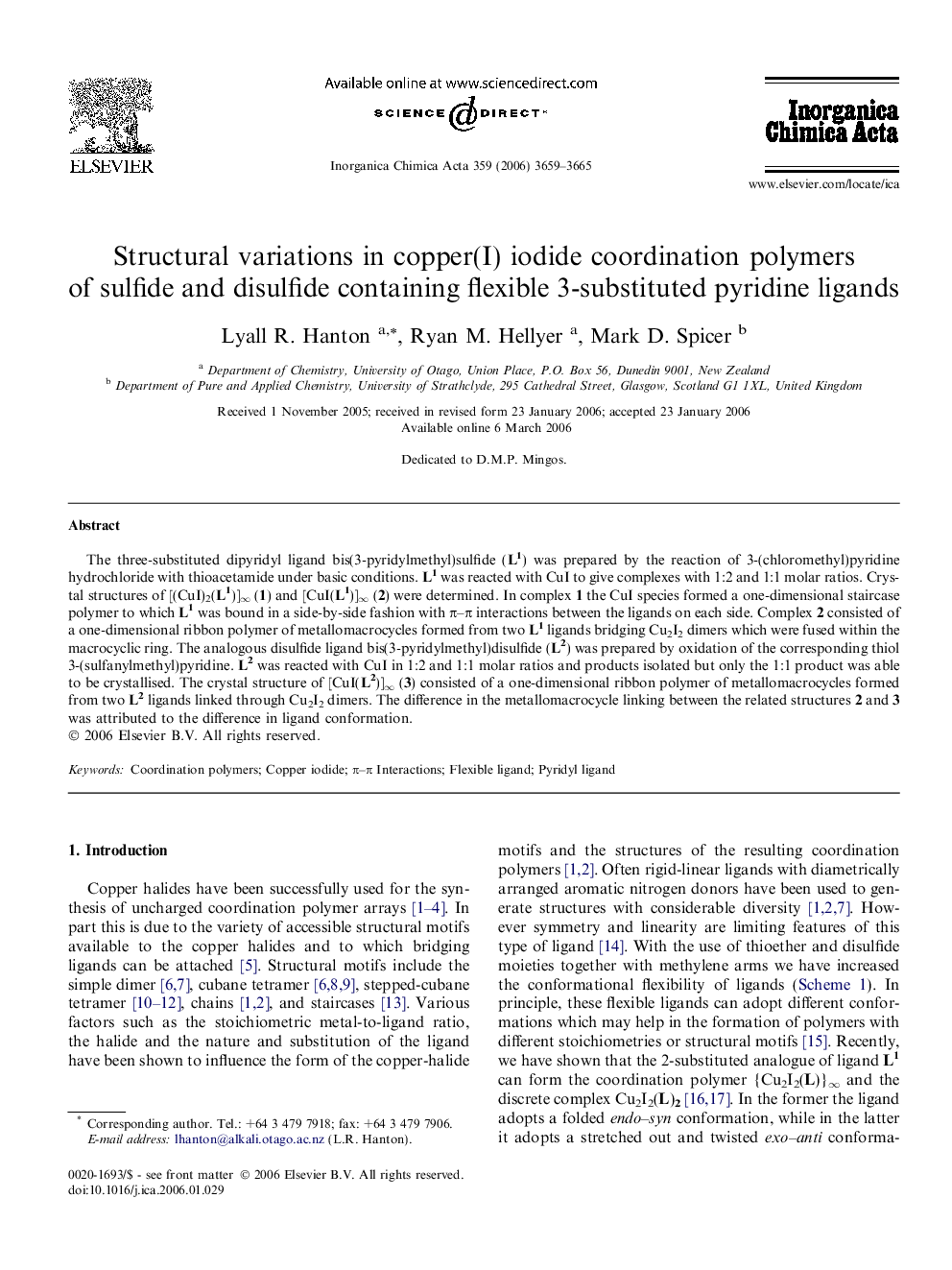| Article ID | Journal | Published Year | Pages | File Type |
|---|---|---|---|---|
| 1312973 | Inorganica Chimica Acta | 2006 | 7 Pages |
The three-substituted dipyridyl ligand bis(3-pyridylmethyl)sulfide (L1) was prepared by the reaction of 3-(chloromethyl)pyridine hydrochloride with thioacetamide under basic conditions. L1 was reacted with CuI to give complexes with 1:2 and 1:1 molar ratios. Crystal structures of [(CuI)2(L1)]∞ (1) and [CuI(L1)]∞ (2) were determined. In complex 1 the CuI species formed a one-dimensional staircase polymer to which L1 was bound in a side-by-side fashion with π–π interactions between the ligands on each side. Complex 2 consisted of a one-dimensional ribbon polymer of metallomacrocycles formed from two L1 ligands bridging Cu2I2 dimers which were fused within the macrocyclic ring. The analogous disulfide ligand bis(3-pyridylmethyl)disulfide (L2) was prepared by oxidation of the corresponding thiol 3-(sulfanylmethyl)pyridine. L2 was reacted with CuI in 1:2 and 1:1 molar ratios and products isolated but only the 1:1 product was able to be crystallised. The crystal structure of [CuI(L2)]∞ (3) consisted of a one-dimensional ribbon polymer of metallomacrocycles formed from two L2 ligands linked through Cu2I2 dimers. The difference in the metallomacrocycle linking between the related structures 2 and 3 was attributed to the difference in ligand conformation.
Graphical abstractReaction in a 1:2 ligand-to-metal ratio produced a side-by-side bound CuI staircase whereas a 1:1 ratio formed a metallomacrocyclic Cu2I2 linked polymer, changing the ligand from a sulfide to a disulfide caused the linking of the metallomacrocycles to change.Figure optionsDownload full-size imageDownload as PowerPoint slide
